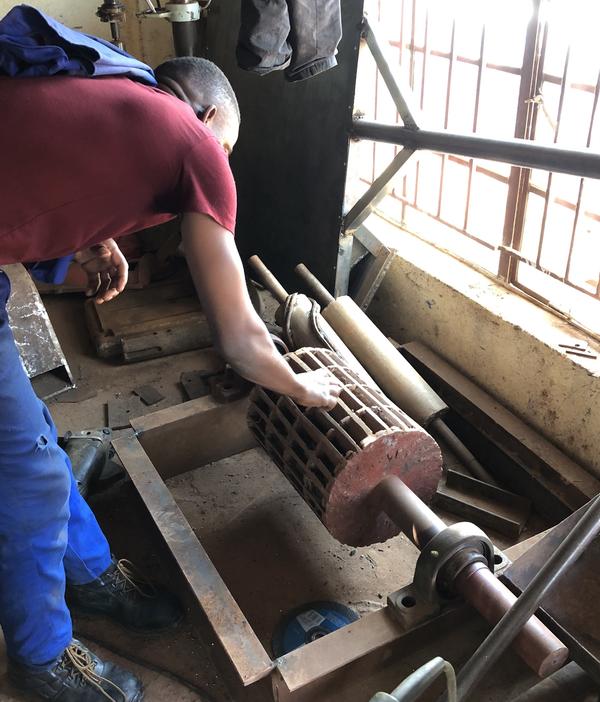Malawi
Malawi is one of the least electrified countries in the world. Only 18% of Malawi’s 18.14 million inhabitants have access to electricity (11.4% provided by the grid network; 6.6% provided through off-grid energy solutions).
Luafwa, Mzuzu
After exploring the sites in southern Malawi, our team proceeded towards north Malawi. We reached Mzuzu (379 kms from capital), which is home to Mzuzu University campus. Mzuzu is known as the northern capital of Malawi surrounded by Viphya mountains which was once known to be the largest man-made forest in Africa. After arriving at Mzuzu, we visited Luafwa micro-hydro project located near to the city on a hilly terrain. It is a 75 kW micro-hydro power plant installed in 2022 by diverting a stream of water from river Ruafwa. The project is funded by Segal Family Foundation and Mzuzu Institute of Technology and Innovation (MZITI) along with some external donors. The technical and ground support is provided by MZITI.
Forebay carrying the water to powerhouse (image credit: H. Vallecha)
Presently, three households are connected with electricity supply and the project is going through community mobilization for its operation and management. However, 200 households are planned to be connected in first phase along with some commercial establishments. It was fascinating to know that technical design of machinery and equipment was performed locally during installation. Even design of turbine and fabrication was carried out at MZITI workshop using scrap material. It was interesting to see their approach of minimum import of technology and machinery and building the whole system from scratch by their own with very limited resources and facility. We also got a chance to see a pico-hydro installation and live demonstration of power generation through it.

Worker designing the turbine at workshop (image credit: H. Vallecha)
After Luafwa, our next site was Chipopoma microhydro power plant located in Livingstonia, 127 kms away from Mzuzu. It is a 45 kW generation system commissioned in 2018. It was majorly funded by UNDP with some other external donors. It was installed by local people who received training from technical institutes with support of UNDP. The project is owned and managed by Village Energy Committee known as ‘Chipopoma Power’. Major equipment like turbine was designed and fabricated locally. The project supplies electricity to 120 households, one maize mill, one primary school, two lodges, and few businesses. The project has been functional since its inception despite many challenges. Presently, it is facing financial challenges to maintain the machinery as not enough revenue is generated due to flat tariffs. Now the village committee is planning to introduce prepaid metering to minimize revenue loss and their dependency on external donors.
Chipopoma powerhouse at Manchewe (image credit: H. Vallecha)
Featured image, top: Turbine driving the generator at Luafwa powerhouse (image credit: H. Vallecha)